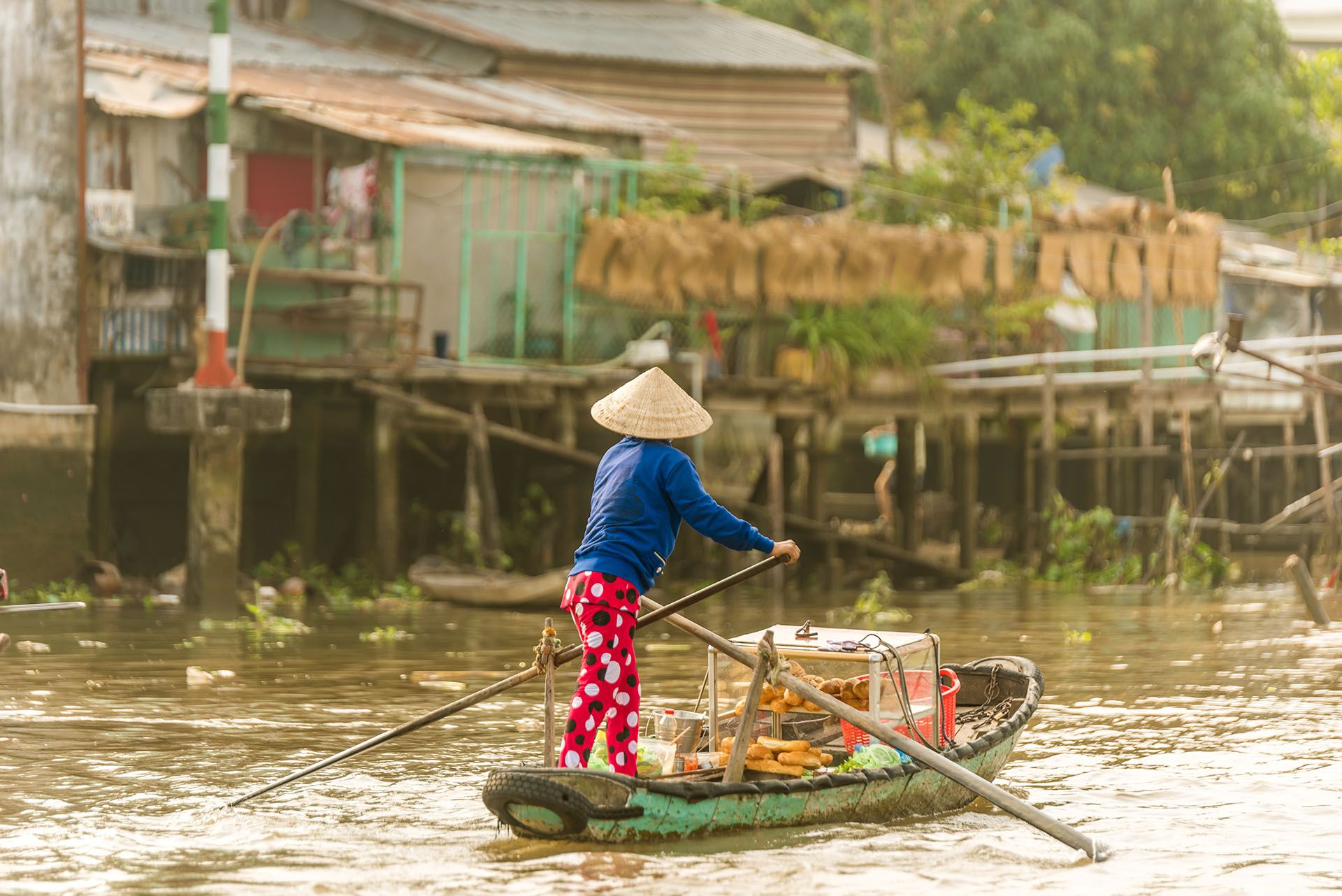Vietnam itinerary 7 days
Although a Vietnam itinerary for 7 days may seem short, this suggested trip plan covers a variety of activities and places that showcase the country's rich history, culture and landscapes.
Read on for a day-by-day breakdown of the destinations you'll visit — and experience you'll get to enjoy — during a diverse Vietnam itinerary for 7 days.
Day 1: Arrival in Hanoi
After landing in Hanoi, Vietnam’s vibrant capital, and checking-in, head to the Old Quarter — Hanoi's handsome historic heart.
Its narrow streets are packed with market stalls, quirky cafés, and temples that showcase the city's diversity. It's also a great place to enjoy sensational Vietnamese street food.
Alternatively, spend your first afternoon around Hoan Kiem. As the centerpiece of the city, there’s always something happening along its shoreline.
That evening, watch a folklore-infused water puppet show at the Thang Long Theatre.
Editor's tip: read up on the best places to stay in Hanoi.
Day 2: Hanoi city tour
On day 2, discover Hanoi’s highlights — including the Ho Chi Minh Mausoleum, the Temple of Literature, and the Old Quarter — on a guided walking tour.
In the afternoon, make your way to the Hoa Lo Prison Museum — a sobering site that offers insight into Vietnam’s history during French colonization and the Vietnam War.
The next day, you'll leave Hanoi and head to Ninh Binh — but if you're wondering about the ideal number of days in Hanoi, know that it’s worth planning a future trip with more time to explore.
Day 3: Transfer from Hanoi to Ninh Binh
On day 3 of this Vietnam itinerary for 7 days, it's time to travel to Ninh Binh. It'll take around 2 hours by car or train, but you'll want to factor in time to make a few stops en route, starting with Trang An.
On reaching this UNESCO World Heritage Site, board a traditional sampan boat to glide through caves and past towering cliffs.
If time allows, visit Hoa Lu, Vietnam’s ancient capital, to explore temples dedicated to past emperors.
Day 4: Full day in Ninh Binh
On day four, wonders around Nimh Binh await, among them some of the most beautiful places in Vietnam.
Start your day early with a visit to Tam Coc, where a boat ride on the Ngo Dong River will take you past limestone karsts and through caves. It’s similar to Trang An, but feels more intimate.
Afterward, rent a bike and cycle through the countryside to Bich Dong Pagoda, a beautiful temple complex built into a limestone mountain.
Come the afternoon, head to Van Long Nature Reserve. Known as a "wetland wonder," this peaceful spot is perfect for spotting langurs and stacks of birds.
Day 5: Travel from Ninh Binh to Hue
On day 8, take an overnight train or flight via Hanoi to Hue, Vietnam’s historic former capital.
If you’re taking the overnight train, be sure to book a sleeper for some comfort. Alternatively, hop on a flight from Hanoi to save time.
After arriving in Hue, we suggest taking it easy as a full day of exploration lies ahead tomorrow.
That said, you wont regret making the effort to take an evening stroll along the Perfume River — after dark, the riverside comes alive with lights and food vendors.
Day 6: Explore the Historic City of Hue
Start your day at the Hue Imperial City, a UNESCO World Heritage Site that served as the seat of the Nguyen Dynasty.
Next, head to the iconic Thien Mu Pagoda. Scenically sited on a hill overlooking the Perfume River, it's one of the oldest and most significant temples in Vietnam.
In the afternoon, spend time exploring Hue’s royal tombs, not least the Tomb of Minh Mang — an architectural masterpiece set in serene gardens.
Lasktly, wrap up your day with a feast of local dishes like bun bo Hue (spicy beef noodle soup) or banh khoai (crispy pancakes).
Editor’s tip: Hue is best explored by bike, so you might want to read our Vietnam motorbike tips and tricks.
Day 7: Journey from Hue to Hoi An via Danang
The last stage of this Vietnam itinerary for 7 days will see you see stacks more sights as you travel from Hue to Hoi An. The journey itself (3-4 hours by car or train) is a highlight in itself.
If you’re traveling by car or motorbike, don’t miss the Hai Van Pass, one of Vietnam’s most scenic routes. Stop at the summit for photos before continuing toward Danang. If you’re on the train, you’ll still get fantastic views of the coastline.
Once in Hoi An, spend your evening strolling the lantern-lit streets of the Ancient Town, or enjoying a feast of cao lau (Hoi An’s signature noodle dish) by the Thu Bon River.
Not sure when to take your trip? Read up on when to go to Vietnam.







